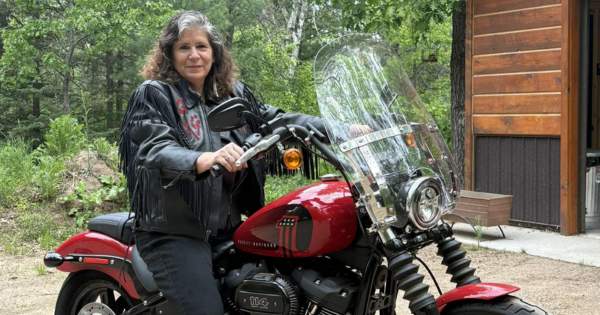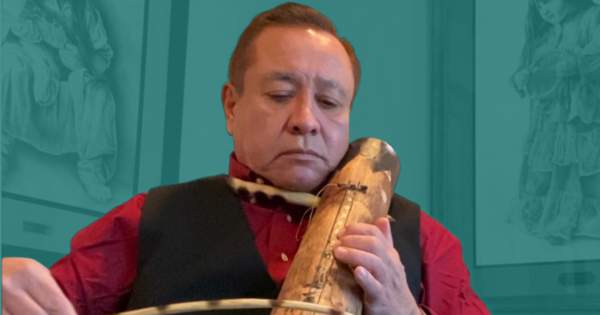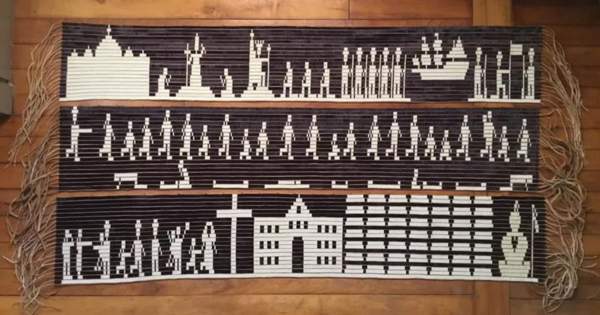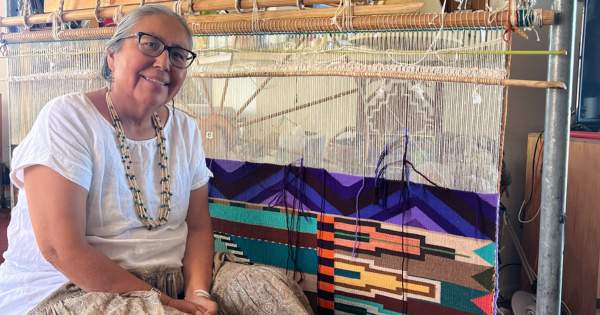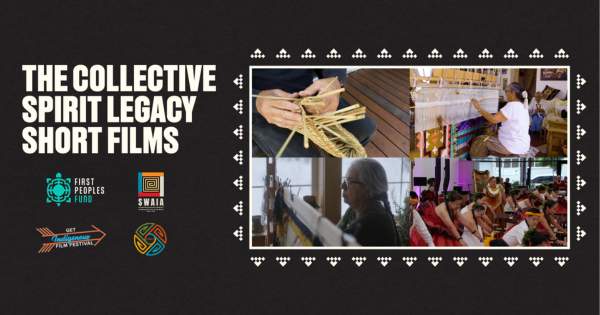
Introducing the 2019 Indigenous Arts Ecology Grantees
By Sarah Elisabeth Sawyer (Choctaw Nation) Artist in Business Leadership Fellow 2015
For our 2019 Indigenous Arts Ecology Grantees, we are honored to introduce five Native art community organizations. These organizations work closely with their artists and culture bearers who are connected with the heartbeat of their local Indigenous arts ecosystems.
Indigenous arts ecosystems are led by the artists and culture bearers whose art and lives embody the values, traditions and aspirations of their communities. These ecosystems are made up of local or regional communities of individuals, formal and informal networks, resources, cultural infrastructure, and organizations and businesses that interact as a system and provide support to Indigenous artists and culture bearers.
The Indigenous Arts Ecology (IAE) a relationship-based, collective system of these arts ecosystems, grounded in ancestral knowledge and are inclusive of environments, spirit, people and lifeways. Strengthening the IAE is is a key strategy of the Indigenous Arts Ecology Grant Program, helping facilitate increased collaboration between organizations and their local artists and culture bearers.
Invited to apply for the program, the following grantees offer access to new markets, knowledge and training, informal networks, creative space, and supplies in order to support and grow the infrastructure needed to uplift their artists. We are proud to partner with these organizations in their goals during their two-year program.
Gizhiigin Art Incubator
Gizhiigin (“grow fast”) is a project of the White Earth Reservation Tribal Council’s Economic Development Division in Minnesota. They work with culture bearers in their community to foster growth, promote local artists, assist with skill development and marketplace goals, and provide artists with space and resources for entrepreneurial development. They hold open studio times, where attendees harvest black ash logs, then work together to prepare the materials for weaving baskets.
The IAE funds will allow Gizhiigin to achieve three outcomes: artistic and economic growth for their artists, the creation of an arts destination to promote the economic growth of White Earth, and revitalization of their traditional arts practices as they leverage regional partnerships.
Jilkaat Kwaan Heritage Center
In the remote Chilkat Valley, the village of Klukwan sits on the banks of the Chilkat River in southeast Alaska. With a population of less than 100, the village of Tlingit people offers cultural educational tours that draw 3,000 visitors annually.
Song, dance, and storytelling at the traditional knowledge camp clan house lets visitors experience the traditions of Tlingit people. A gift shop in the Jilkaat Kwaan Heritage Center allows them to discover traditional art, where over 30 local artists sell their work.
However, there is a lack of access to supplies in the remote village. This has prevented people from doing their traditional arts regularly. Lani Hotch (Tlingit), a former First Peoples Fund Community Spirit Award recipient and executive director of the Heritage Center Board, plans to use a portion of their IAE grant as initial capital to purchase leather, furs, beads, buttons, felt, yarn, sinew/sewing thread, and beading and glovers needles that artists can then buy locally. The IAE grant will also help them make much-needed repairs to dance regalia, upholding the quality and authenticity of Tlingit culture.
The artists have helped create a sense of place within the community, and the Chilkat Valley as a visitor destination.
PAʻI Foundation
Located on the island of O’ahu, the PAʻI Foundation was established in 2001 as the nonprofit organization of Pua Aliʻi ʻIlima, a hālau hula (school of Hawaiian dance) founded in 1977 by kumu hula (master teacher of Hawaiian dance), Victoria Holt Takamine.
With a goal to establish a cultural center on O’ahu to better serve the broader Hawaiian community, a new 6,000 square foot PAʻI Arts Gallery & Performing Arts Center will open in 2019 as part of the ‘Ola Ka ʻIlima Artspace affordable artist development project. Partnered with Artspace and the IAE program, PAʻI is planning an arts market in the new space.
The IAE funds are also supporting PAʻI’s involvement with the creation of a new arts market at the 13th Festival of Pacific Arts & Culture taking place June 2020 in Honolulu, featuring 28 Pacific Island Nations from all over Oceania. They expect 3,000 artists to demonstrate and share their artwork, including hundreds of artists from Hawaiʻi.
PAʻI has partnered with First Peoples Fund to conduct Native Arts Professional Development (NAPD) training workshops, and have several artists and culture bearers who are certified trainers. PAʻI plans to offer advanced-level financial literacy, curatorial, exhibition, and marketing skills workshops, to prepare artists to exhibit, demonstrate and sell their work in galleries and markets, thereby helping to preserve and perpetuate Native Hawaiian cultural traditions for future generations.
Sitting Bull College
Guided by Lakota/Dakota culture, values, and language, Sitting Bull College is committed to building intellectual capital through academic, career and technical education, and promoting economic and social development. The college is located on the Standing Rock Indian Reservation which spans 2.3 million acres across southern North Dakota and northern South Dakota.
They offer cultural classes and workshops in making star quilts, shawls, horse masks, ledger art, parfleche, painting, pottery, regalia, skirts, ribbon shirts, baby moccasins, beading, and quilling.
While the college provides opportunities for artists to market their work through the Sitting Bull Visitor Center Gift Shop and the Sitting Bull College Bookstore and holds art classes and training, they want to coordinate all the efforts through organizing an artist association. The association can then be used to market programs and services that help build capacity for Standing Rock culture bearers and artists.
The college believes artists give life to a creative art community by thinking outside the box and teaching traditions important to Lakota/Dakota lifeways.
Zuni Pueblo MainStreet
Zuni Pueblo MainStreet was created in 2012 to utilize new approaches and methods, encouraging revitalization of the local economy while continuing to preserve unique traditional and historical elements.
7,500 Zuni artisans help support the local economy with the creation and sale of various arts, including silversmithing, pottery making, fetish carving, painting, woodworking, and weaving. But while the arts and crafts industry is an essential asset to the Zuni community, those involved in arts production are not well woven into the economy or supported by training.
Zuni Pueblo MainStreet works with 150 artists, an imbalance with the 7,500 who rarely have access to assistance. The organization’s vision is to reach out to more artists and empower them as entrepreneurs by creating opportunities for them to display and sell their work locally, and enable them to refine their current skill set and gain knowledge and expertise on how to better market themselves.
The IAE Grant Program is supported through the Bush Foundation, McKnight Foundation, Northwest Area Foundation, and the Surdna Foundation.

